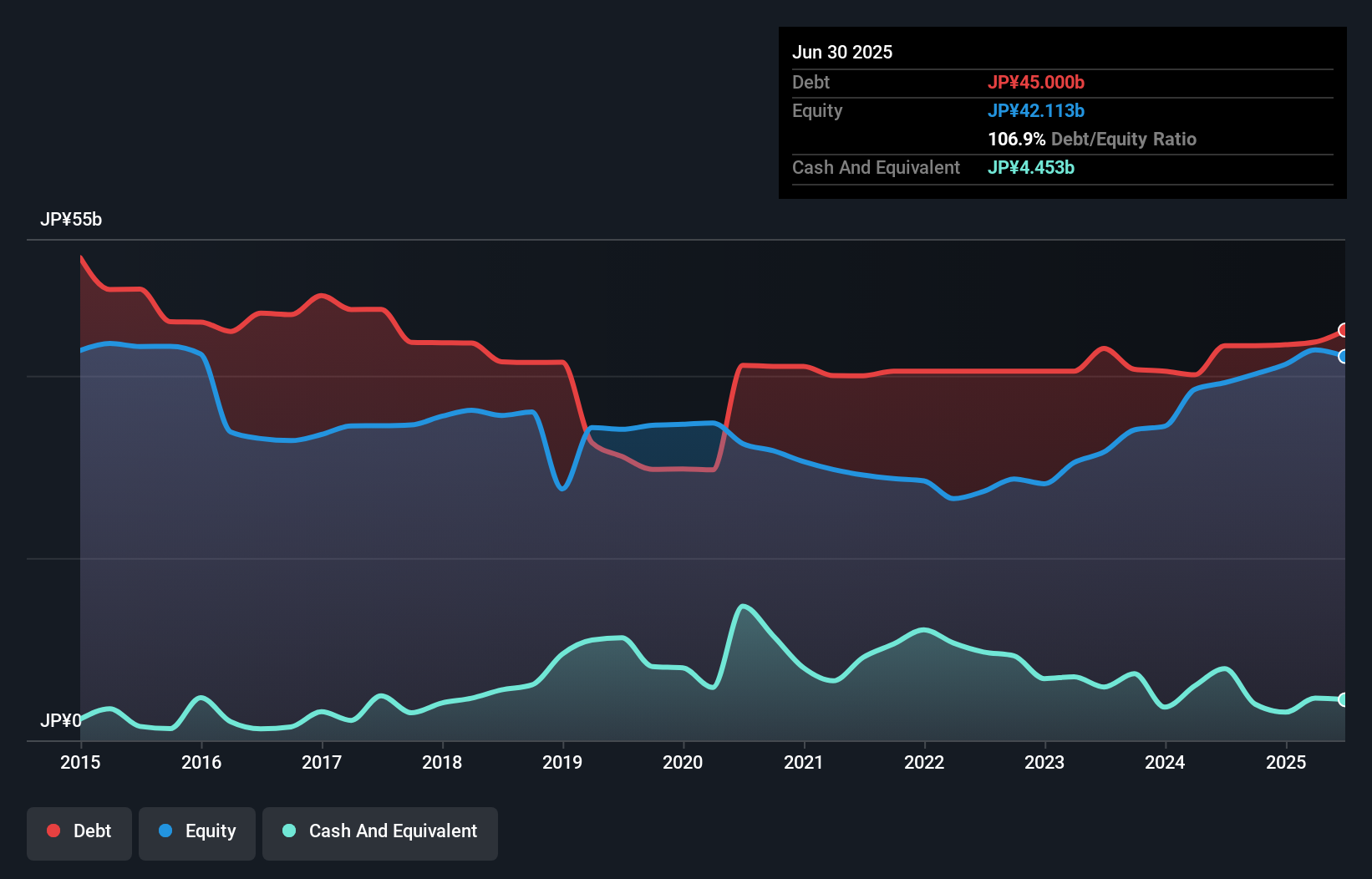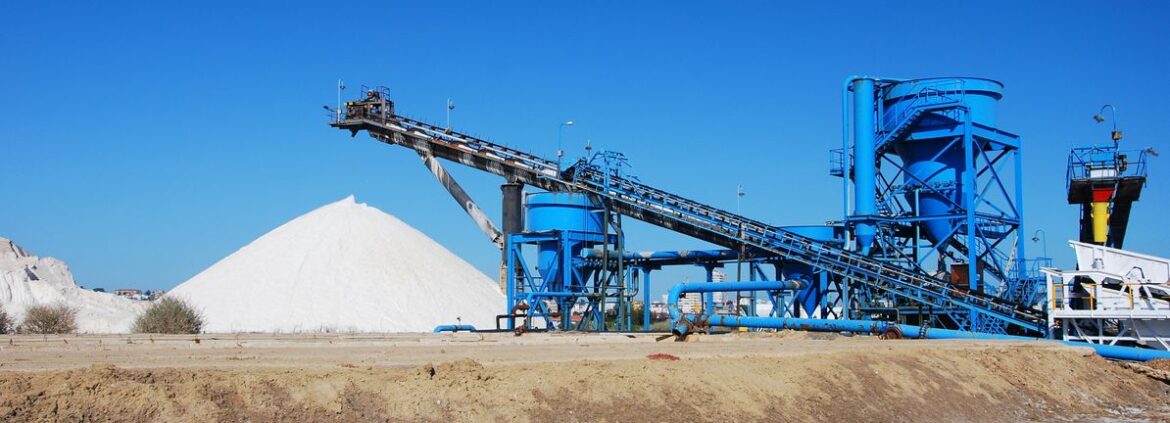Howard Marks put it nicely when he said that, rather than worrying about share price volatility, ‘The possibility of permanent loss is the risk I worry about… and every practical investor I know worries about.’ So it seems the smart money knows that debt – which is usually involved in bankruptcies – is a very important factor, when you assess how risky a company is. As with many other companies OSAKA Titanium technologies Co.,Ltd. (TSE:5726) makes use of debt. But should shareholders be worried about its use of debt?
We’ve found 21 US stocks that are forecast to pay a dividend yield of over 6% next year. See the full list for free.
When Is Debt Dangerous?
Debt and other liabilities become risky for a business when it cannot easily fulfill those obligations, either with free cash flow or by raising capital at an attractive price. If things get really bad, the lenders can take control of the business. However, a more common (but still painful) scenario is that it has to raise new equity capital at a low price, thus permanently diluting shareholders. Having said that, the most common situation is where a company manages its debt reasonably well – and to its own advantage. When we think about a company’s use of debt, we first look at cash and debt together.
What Is OSAKA Titanium technologiesLtd’s Debt?
The chart below, which you can click on for greater detail, shows that OSAKA Titanium technologiesLtd had JP¥45.0b in debt in June 2025; about the same as the year before. However, it also had JP¥4.45b in cash, and so its net debt is JP¥40.5b.
 TSE:5726 Debt to Equity History October 28th 2025 A Look At OSAKA Titanium technologiesLtd’s Liabilities
TSE:5726 Debt to Equity History October 28th 2025 A Look At OSAKA Titanium technologiesLtd’s Liabilities
Zooming in on the latest balance sheet data, we can see that OSAKA Titanium technologiesLtd had liabilities of JP¥30.6b due within 12 months and liabilities of JP¥27.7b due beyond that. Offsetting these obligations, it had cash of JP¥4.45b as well as receivables valued at JP¥22.1b due within 12 months. So its liabilities outweigh the sum of its cash and (near-term) receivables by JP¥31.8b.
This deficit isn’t so bad because OSAKA Titanium technologiesLtd is worth JP¥99.0b, and thus could probably raise enough capital to shore up its balance sheet, if the need arose. However, it is still worthwhile taking a close look at its ability to pay off debt.
View our latest analysis for OSAKA Titanium technologiesLtd
We measure a company’s debt load relative to its earnings power by looking at its net debt divided by its earnings before interest, tax, depreciation, and amortization (EBITDA) and by calculating how easily its earnings before interest and tax (EBIT) cover its interest expense (interest cover). This way, we consider both the absolute quantum of the debt, as well as the interest rates paid on it.
OSAKA Titanium technologiesLtd has a debt to EBITDA ratio of 3.1, which signals significant debt, but is still pretty reasonable for most types of business. But its EBIT was about 35.9 times its interest expense, implying the company isn’t really paying a high cost to maintain that level of debt. Even were the low cost to prove unsustainable, that is a good sign. Importantly, OSAKA Titanium technologiesLtd’s EBIT fell a jaw-dropping 21% in the last twelve months. If that earnings trend continues then paying off its debt will be about as easy as herding cats on to a roller coaster. The balance sheet is clearly the area to focus on when you are analysing debt. But it is future earnings, more than anything, that will determine OSAKA Titanium technologiesLtd’s ability to maintain a healthy balance sheet going forward. So if you’re focused on the future you can check out this free report showing analyst profit forecasts.
But our final consideration is also important, because a company cannot pay debt with paper profits; it needs cold hard cash. So we clearly need to look at whether that EBIT is leading to corresponding free cash flow. Over the last three years, OSAKA Titanium technologiesLtd recorded negative free cash flow, in total. Debt is far more risky for companies with unreliable free cash flow, so shareholders should be hoping that the past expenditure will produce free cash flow in the future.
Our View
To be frank both OSAKA Titanium technologiesLtd’s conversion of EBIT to free cash flow and its track record of (not) growing its EBIT make us rather uncomfortable with its debt levels. But at least it’s pretty decent at covering its interest expense with its EBIT; that’s encouraging. Looking at the bigger picture, it seems clear to us that OSAKA Titanium technologiesLtd’s use of debt is creating risks for the company. If all goes well, that should boost returns, but on the flip side, the risk of permanent capital loss is elevated by the debt. The balance sheet is clearly the area to focus on when you are analysing debt. However, not all investment risk resides within the balance sheet – far from it. To that end, you should learn about the 4 warning signs we’ve spotted with OSAKA Titanium technologiesLtd (including 2 which are a bit unpleasant) .
At the end of the day, it’s often better to focus on companies that are free from net debt. You can access our special list of such companies (all with a track record of profit growth). It’s free.
New: AI Stock Screener & Alerts
Our new AI Stock Screener scans the market every day to uncover opportunities.
• Dividend Powerhouses (3%+ Yield)
• Undervalued Small Caps with Insider Buying
• High growth Tech and AI Companies
Or build your own from over 50 metrics.
Explore Now for Free
Have feedback on this article? Concerned about the content? Get in touch with us directly. Alternatively, email editorial-team (at) simplywallst.com.
This article by Simply Wall St is general in nature. We provide commentary based on historical data and analyst forecasts only using an unbiased methodology and our articles are not intended to be financial advice. It does not constitute a recommendation to buy or sell any stock, and does not take account of your objectives, or your financial situation. We aim to bring you long-term focused analysis driven by fundamental data. Note that our analysis may not factor in the latest price-sensitive company announcements or qualitative material. Simply Wall St has no position in any stocks mentioned.


AloJapan.com